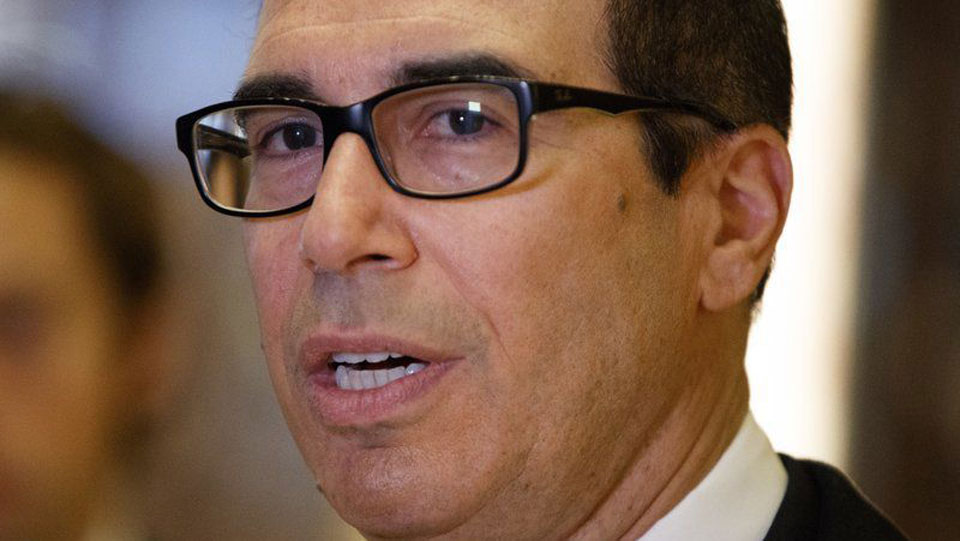
Not that any reasonable mind paying even cursory attention to the performance of the U.S. economy for working people since the Reagan years should need more evidence, but nonetheless it is worth pointing out that General Motors’ recent announcement of it 14,000 job cuts once again demonstrates the grand boondoggle of trickle-down economics.
Coined by comedian Will Rogers, who applied it pejoratively to Herbert Hoover’s stimulus plan in response to the Great Depression, the term, later taken up by critics of Ronald Reagan’s tax cuts, refers to economic policies which disproportionately benefit the wealthy initially but which hold out the promise—historically an illusory one—of benefiting all in the longer term.
Such was exactly the promise of Trump’s tax cuts. Reducing the corporate tax rate from 35 to 21 percent and saving corporations some $13 billion in taxes, supposedly this windfall was to spur economic growth, create more jobs, and induce companies to raise wages. While Treasury Secretary Steve Mnuchin trumpeted that 90 percent of working adults would experience an increase in pay tied directly to the tax cuts, in fact only 4.3 percent of workers in Fortune 500 companies have received either a one-time bonus or an increase in wages. Businesses have reaped nine times more in tax cuts than what they have passed on to workers.
And, of course, the ballooning deficit resulting from the Trump tax-cuts has cultivated a fertile context for Paul Ryan and Mitch McConnell to loudly renew their insistence that cuts to Medicare and Social Security are necessary to address the out-of-control deficit their own policies immediately exacerbated. Far from benefitting workers, these tax cuts, which were supposedly to trickle down, just keep cutting workers and increasing economic precarity. How about we measure that?
So while “the economy” might seem to be humming along with Trump touting record-low unemployment rates and booming corporate profits, we need to recognize, of course, that those metrics used to gauge the health of “the economy” in no way measure the well-being and security of the American worker or the degree to which the working class shares in the fruits of their labors manifested in the “success” of the overall economy. Indeed, shares of GM’s stock surged some 9 percent after the announcement of layoffs, underscoring the diametrical disconnect between corporate and shareholder interests and those of the mass of Americans overall.
If anybody thought transferring boatloads of wealth to corporations would encourage hiring and wage increases, well, let’s just say a funny thing happened as that wealth looked for a way to trickle down.
Capitalism happened.
Private companies don’t serve the public good, so throwing excess money at them to feed their top lines won’t encourage them to ignore the laws of capitalism to keep more workers employed than they need to meet lagging demand. Their obligation is to create value for shareholders, not serve the well-being of Americans who have served them and created their wealth. Economists such as Larry Summers, entrenched as they are in capitalist mentality, have, in fact, praised GM’s announced layoffs as, in fact, responsible and doing what’s best for the U.S. economy.
And yet, while capitalist economics is a problem, to be sure, which can only be solved through radical overhaul, a big part of the problem is also an entrenched capitalist cultural mentality which focuses on the wealthy rather than the workers as key driver of economic health.
If that focus were shifted, turned around, to focus on workers and their well-being, even from the perspective of capitalist economics, we would have a healthier and more humane economy.
In other words, a gush-up, as opposed to trickle-down, economics would actually contribute to a healthier capitalism and also, I believe, pave the road to socialism.
Here are three examples of what I mean by a gush-up economics, which I believe in part means exercising a socialist imagination even within the framework of our capitalist economy.
The $15.00 Minimum Wage
A recent study from the Illinois Economic Policy Institute highlights the many ways raising the minimum wage would significantly improve Illinois’ economy. The study contends, “By raising the minimum wage, Illinois can boost worker incomes, reduce income inequality, increase consumer spending, grow the economy, generate tax revenues, and decrease taxpayer costs for government assistance programs.”
In a nutshell, raising the minimum wage to $15 would both save taxpayers money by decreasing the need for public assistance for the working poor (saving $87 million alone in food stamp outlays, according to the study), increase the revenue the state brings in from income and sales tax (generating, the study says, $380 million in new state tax revenue), and overall generate $19 billion in economic activity.
From a cultural perspective, doesn’t capitalism pretend to want self-sufficient people and to reduce the scope of the welfare state? What we see here is that directing resources through public policy not to the wealthy, as Trump’s tax cuts do, but to the worker more than arguably contributes more powerfully to the health of the economy and overall society.
Tackling College Debt
College debt levels have topped $1.4 trillion and, according to many economists, constitute a major drag on our economy. Think about it: college graduates saddled with debt are reluctant, and frankly unable, to purchase a home, start a family, or create a small business, constraining key sectors that drive economic growth and vitality under capitalism such as the housing market and entrepreneurial development.
According to a study from the Levy Institute, canceling the $1.4 trillion in student debt would spur economic activity to the tune of creating between 1.2 and 1.5 million new jobs in the first few years, creating tax-paying citizens who buy houses, start families, create businesses, and so forth.
Canceling the debt is a matter of reversing the transference of wealth economic policies such as the Trump tax cuts have been orchestrating, beginning most intensely in the Reagan years. As economist Marshall Steinbaum of the Roosevelt Institute has noted, “We shifted the cost of education to individuals and simultaneously required anyone who wanted a job to get a degree and to finance that degree with student debt . . . [All] we’ve managed to do is shift the cost of job training from employers to workers while wages stagnated.”
Reversing this shift Steinbaum identifies exemplifies what I’m calling a gush-up economics, a worker-centered economics that even makes the current economic arrangement function in a more healthy fashion.
Re-Visiting the Foreclosure Crisis
As another example of how a gush-up economics would alter the functioning on the U.S. economy in healthier directions, take the foreclosure crisis that largely caused our latest Great Recession. Our leaders, our great minds, imprisoned by the limitations of the capitalist imagination, sought to solve the problem and save the system from total collapse by bailing out the banks from the toxic mortgages they issued which were leaving them high and dry because borrowers could not repay them.
But while the banks were bailed out, the “homeowners” were still foreclosed upon and evicted. Homes were left empty. An abundance of houses flooded the market, driving down property values for those still in their home. Millions more Americans thus found themselves underwater in their mortgages, witnessing their chief investment and wealth asset disappear. Gazillions in wealth were lost, destroying the housing market and eroding the financial wherewithal of the consumer (whose prowess accounts for more than 2/3 of the economy). But the banks were saved. The system was saved.
How might a gush-up economic imagination have approached the problem differently-even within the context of capitalist framework and perhaps even while saving the system? Putting human need first, a gush-up approach-prioritizing an economic approach that serves people as opposed to one in which people serve the economy-would have sought first to keep people housed.
Imagine if instead of prioritizing the banks, our leaders had sought to save the system by bailing out homeowners? If the trillions of dollars had been dispensed to those with unpaid mortgages instead of the banks? To those people who could have paid off their mortgages, made good on the “toxic loans,” and arguably have bailed out the banks while staying in their homes? It would have prevented the destruction of the housing market and the death spiral of the overall economy.
In the end, even in this scenario, the capitalist system is perhaps restored. The gush-up economic approach, however, would approach governing and the crafting of economic policy with a clearer vision of what the objective of a government and a political economy should be. And that is to serve the people and organize the production and distribution of resources to most efficiently serve human need, first and foremost.
In this sense, this gush-up approach promises to pave the way to a more socialist world.










